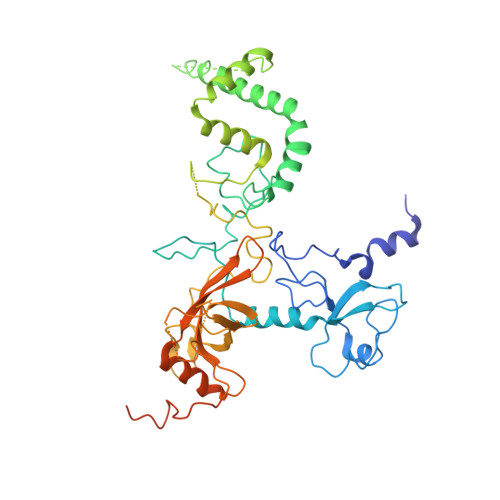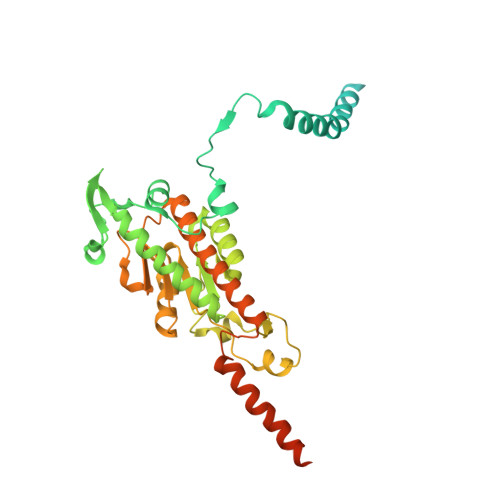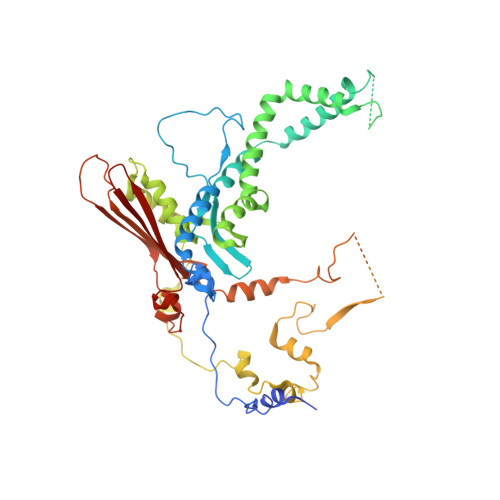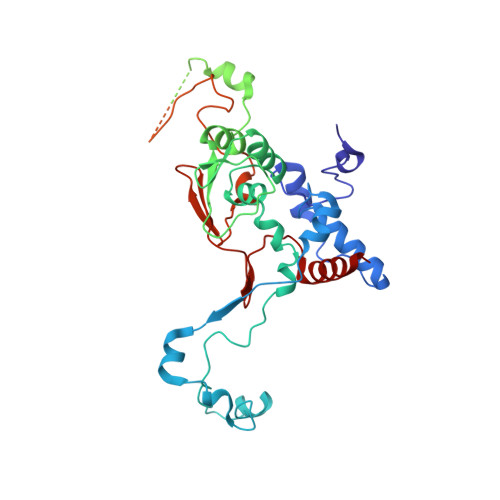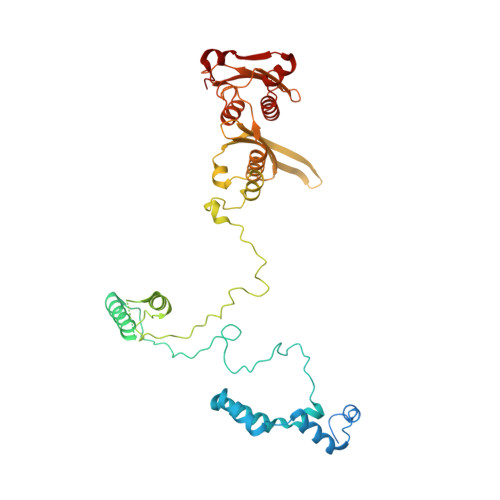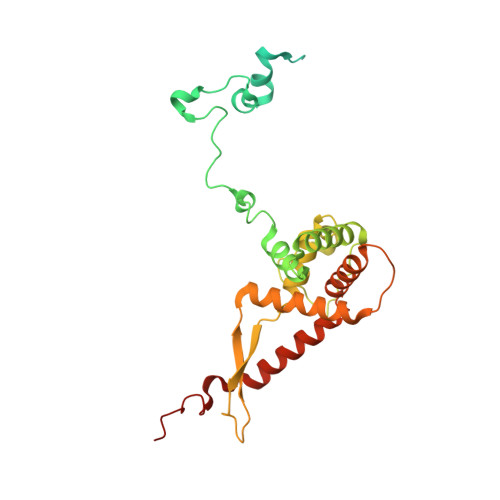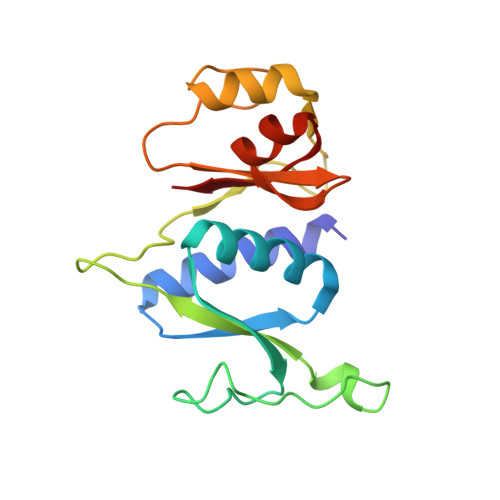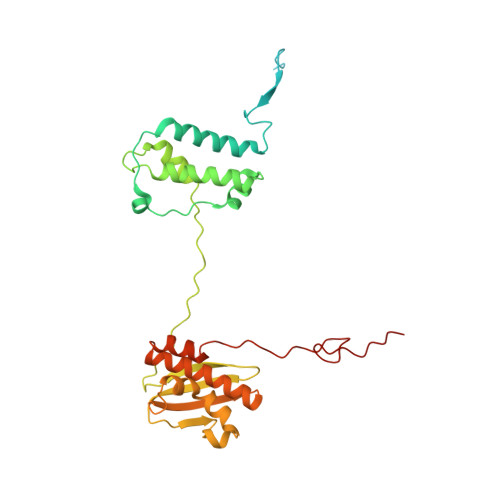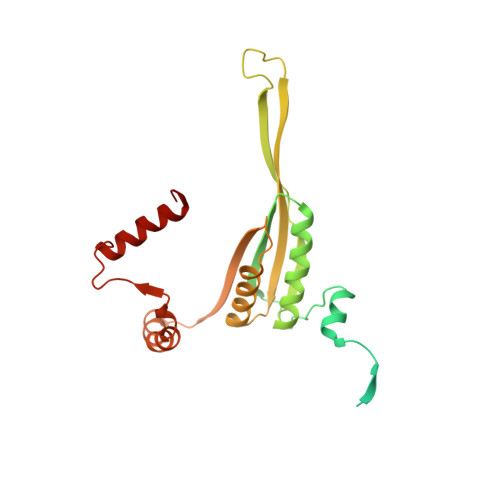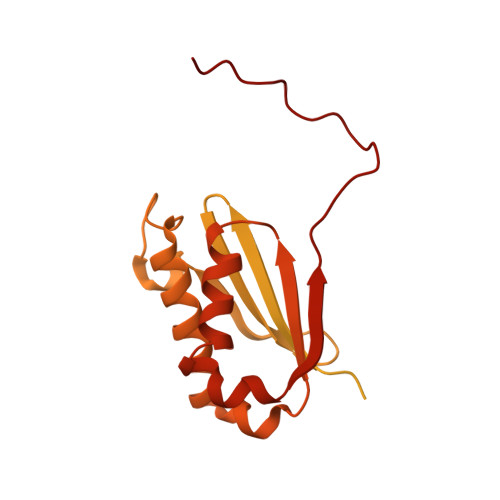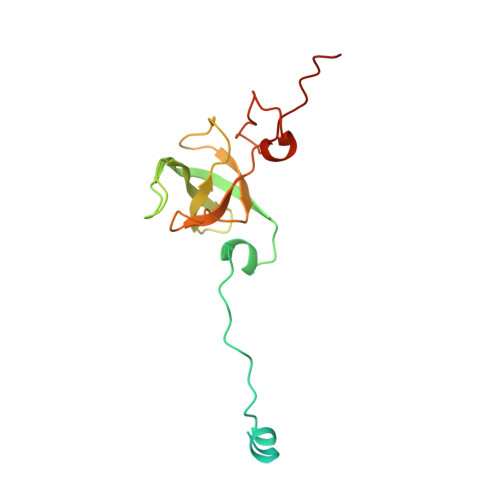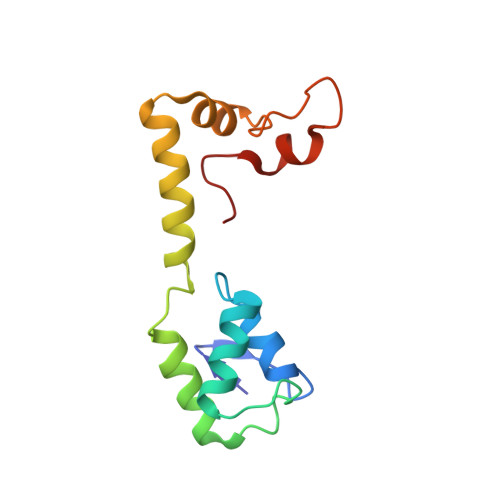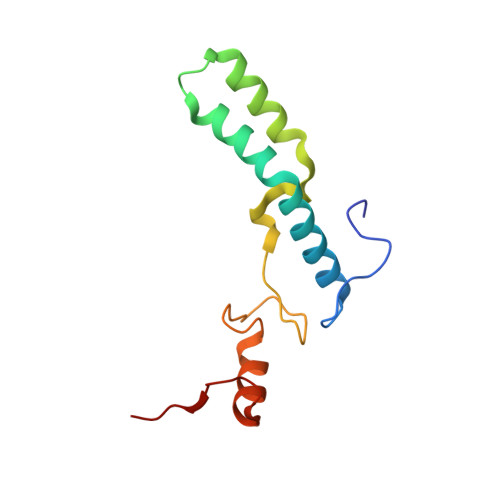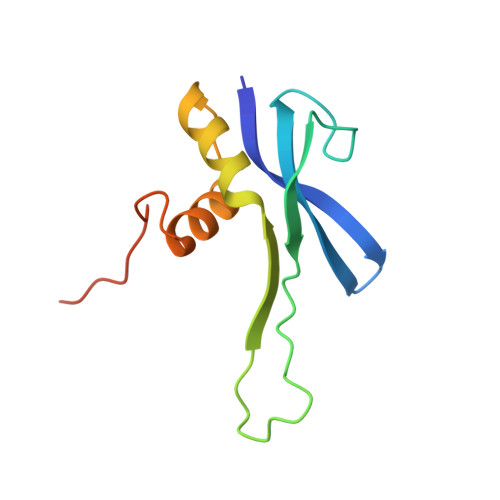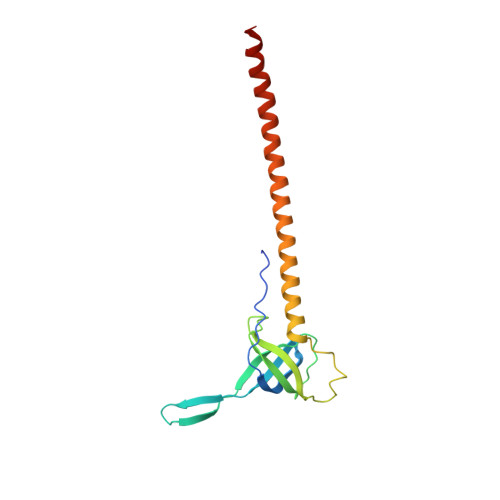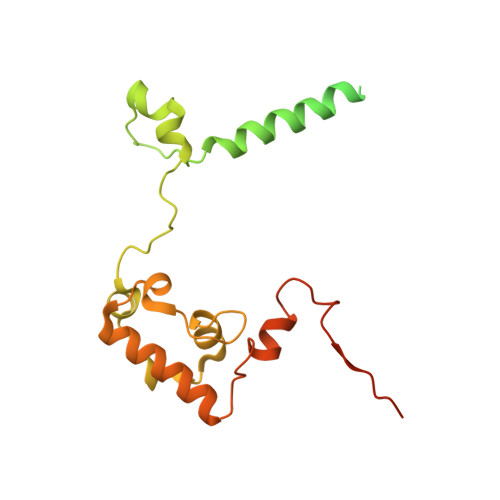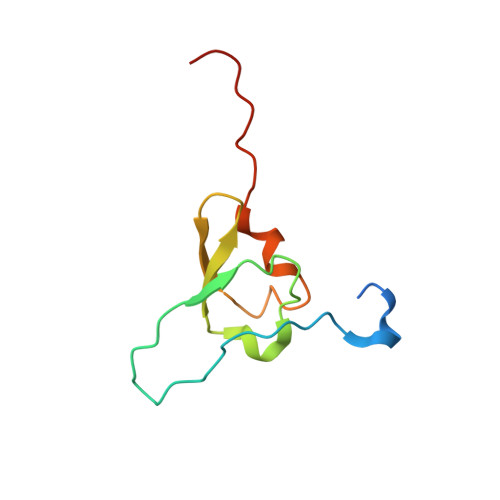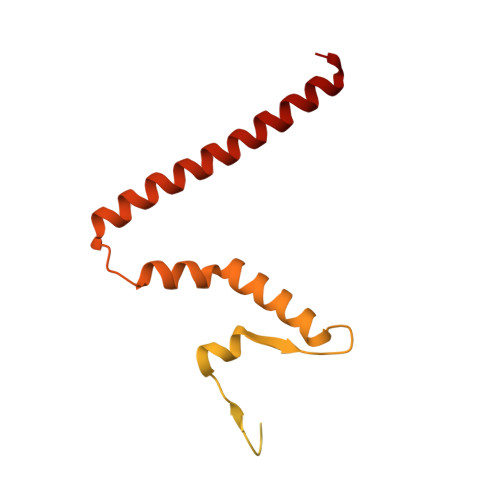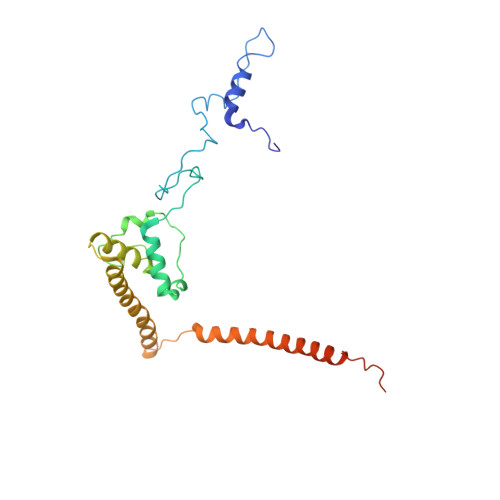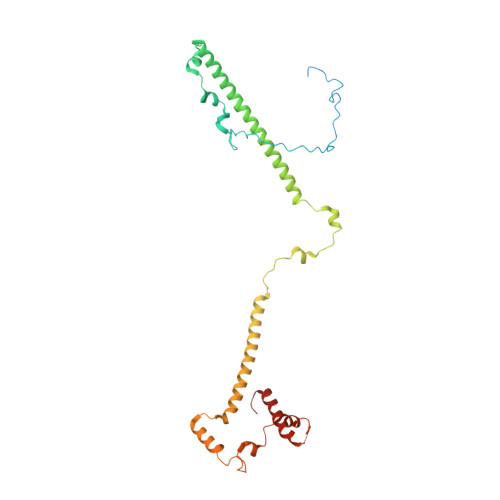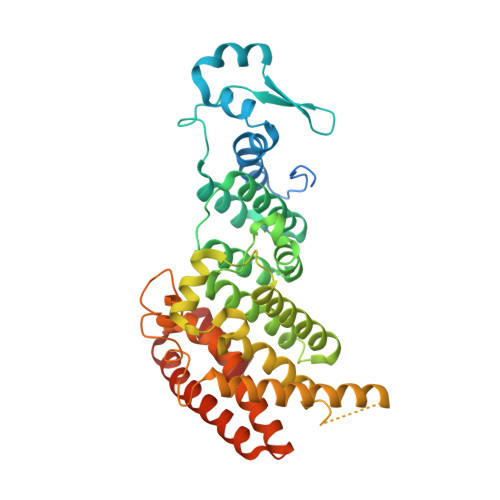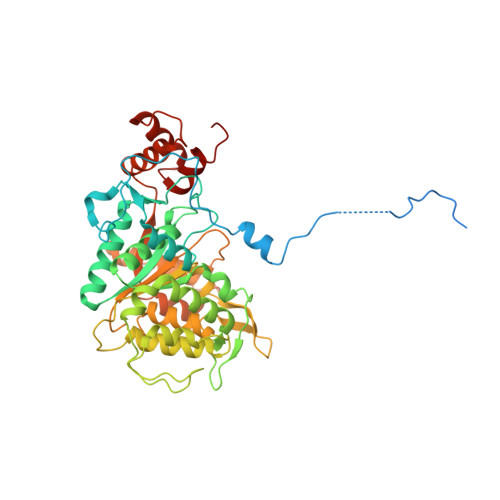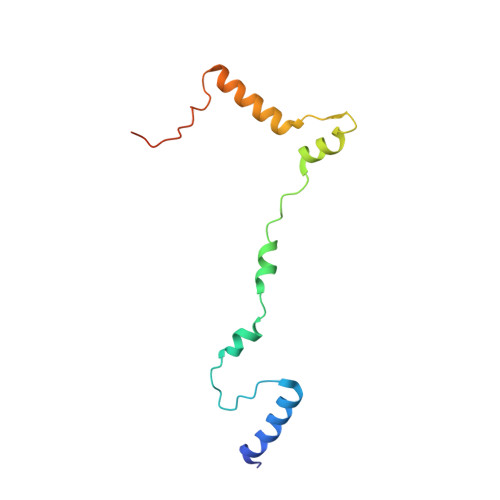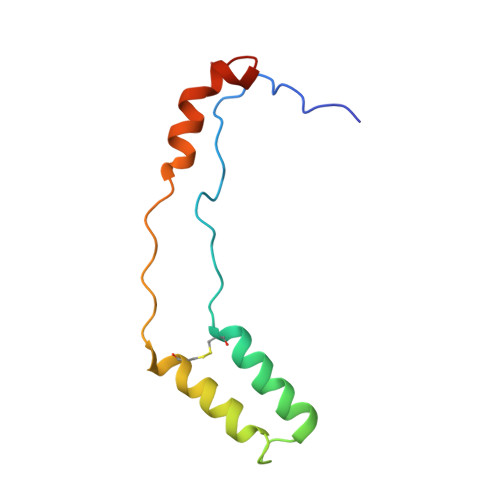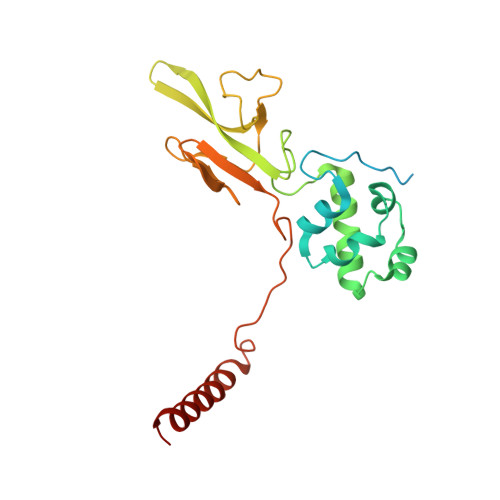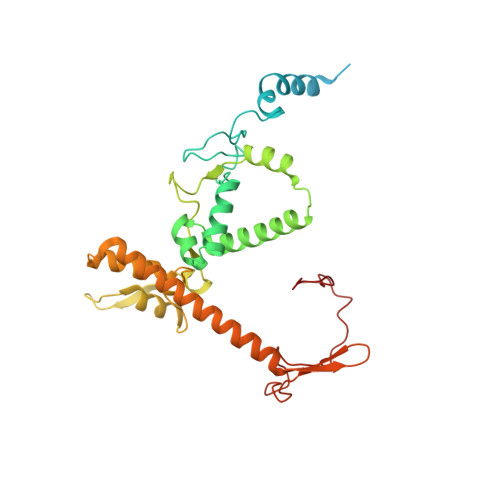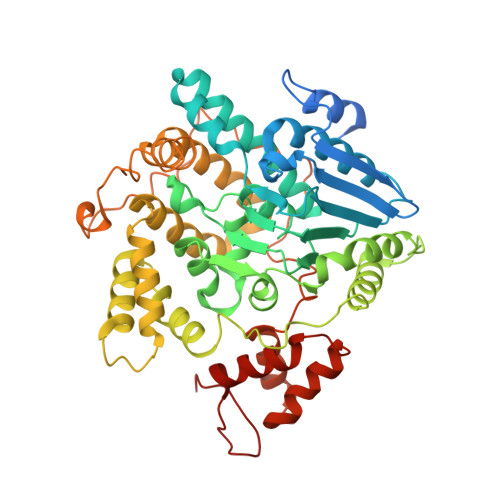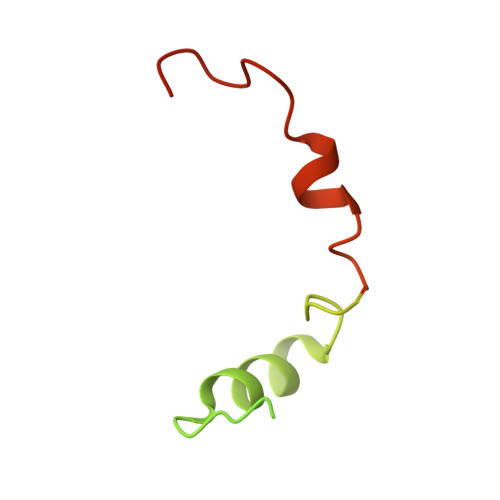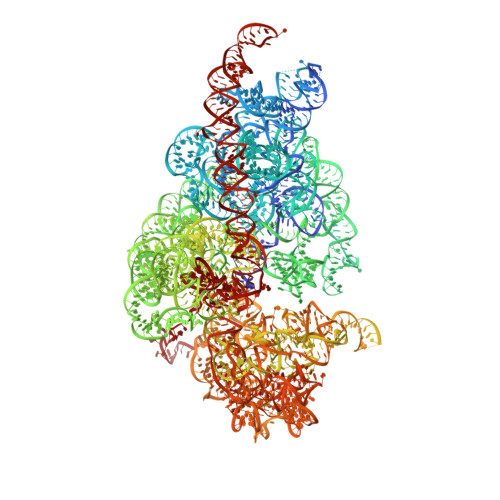Analysis of translating mitoribosome reveals functional characteristics of translation in mitochondria of fungi.
Itoh, Y., Naschberger, A., Mortezaei, N., Herrmann, J.M., Amunts, A.(2020) Nat Commun 11: 5187-5187
- PubMed: 33056988
- DOI: https://doi.org/10.1038/s41467-020-18830-w
- Primary Citation of Related Structures:
6YW5, 6YWE, 6YWS, 6YWV, 6YWX, 6YWY - PubMed Abstract:
Mitoribosomes are specialized protein synthesis machineries in mitochondria. However, how mRNA binds to its dedicated channel, and tRNA moves as the mitoribosomal subunit rotate with respect to each other is not understood. We report models of the translating fungal mitoribosome with mRNA, tRNA and nascent polypeptide, as well as an assembly intermediate. Nicotinamide adenine dinucleotide (NAD) is found in the central protuberance of the large subunit, and the ATPase inhibitory factor 1 (IF 1 ) in the small subunit. The models of the active mitoribosome explain how mRNA binds through a dedicated protein platform on the small subunit, tRNA is translocated with the help of the protein mL108, bridging it with L1 stalk on the large subunit, and nascent polypeptide paths through a newly shaped exit tunnel involving a series of structural rearrangements. An assembly intermediate is modeled with the maturation factor Atp25, providing insight into the biogenesis of the mitoribosomal large subunit and translation regulation.
Organizational Affiliation:
Science for Life Laboratory, Department of Biochemistry and Biophysics, Stockholm University, 17165, Solna, Sweden.








